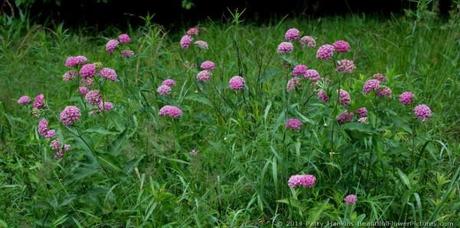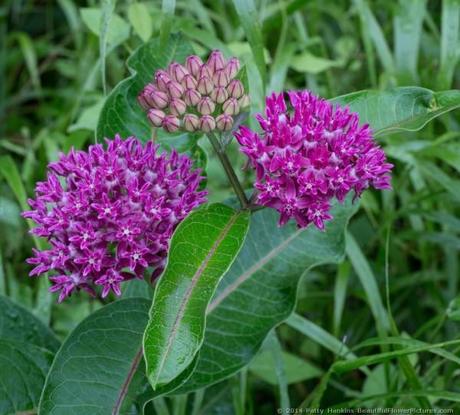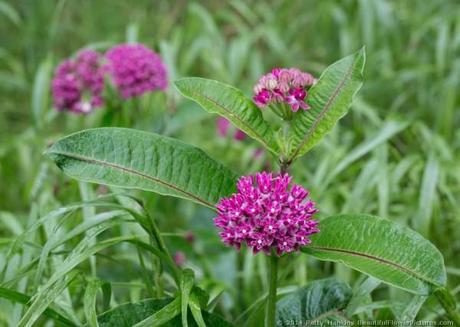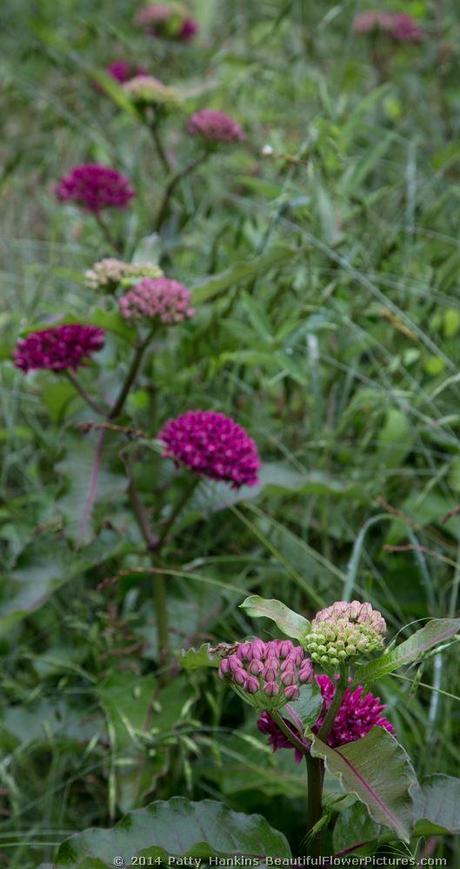
Purple Milkweed © 2014 Patty Hankins
Earlier this year I made a couple of trips to Huntley Meadows Park in Alexandria, Virginia. Huntley Meadows is a 1500 acre park of woods and wetlands surrounded by the DC suburbs. It’s a wonderful spot to get away for a quick break in the natural world.

Purple Milkweed © 2014 Patty Hankins
On my visit in June I photographed a new to me member of the milkweed family – Purple Milkweed (Asclpeias purpurascens). This was the first time I’d seen milkweed in a color this bright. I absolutely love it and would love to add some to my garden next year.

Purple Milkweed © 2014 Patty Hankins
Purple Milkweed is a member of the Asclepiadaceae (milkweed) family. It is native to much of the eastern United States – except for Florida, Mississippi, South Carolina and Vermont. It is listed as endangered or of special concern in Connecticut, Massachusetts, Tennessee and Wisconsin. In Rhode Island – it is listed as a historical plant.

Purple Milkweed © 2014 Patty Hankins
Purple Milkweed is a perennial plant that grows as high as 5 feet tall. The ones I photographed were between 4 and 5 feet tall. The flowers of the purple milkweed form in round clusters – opening up in an incredible shade of purple. The five part flowers are under an inch tall.

Purple Milkweed © 2014 Patty Hankins
Purple Milkweed can be a great addition to a native plant garden. It prefers to grow in full sun. It is tolerant to deer, droughts, erosion, dry or rocky soil.

Purple Milkweed © 2014 Patty Hankins
Like many native plants certain pollinators love purple milkweed. It is known to attract monarch butterflies, milkweed beetles, and milkweed bugs

Purple Milkweed © 2014 Patty Hankins
Various members of the milkweed family have been used as traditional remedies for a number of conditions. The only specific use for Purple Milkweed I found was as a rememdy for warts.

Purple Milkweed © 2014 Patty Hankins
You can find more information about purple milkweed at
Lady Bird Johnson Wildflower Center
Robert W. Freckmann Herbarium
